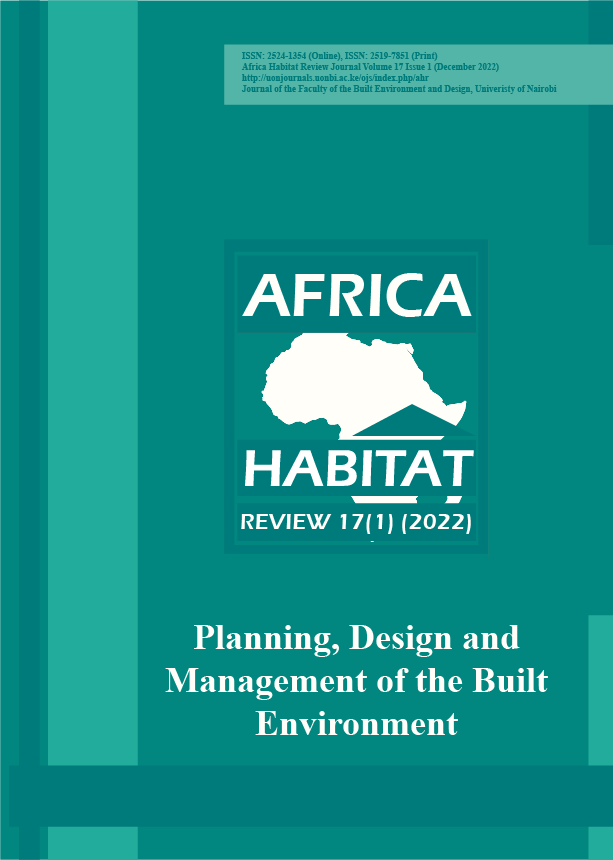Architectural metabletica: Transformation of the Kenyan Luo dwelling unit
Abstract
Architectural transformations are a subset of socio-cultural change. Acculturation and adoption of new architectural tastes—due to colonialism and the Christian Missionary effort— introduced significant changes (metabletica) to Luo culture and architecture, at the levels of form, materiality, and spatial organisation due to shifts in modes of existence that departed from the pre-colonial model. Such changes are exemplified by absentee fathers in ‘modern’ homesteads, shrinking family units, and lost aspects of Luo culture such as warrior-hood. This study discusses socio-cultural changes, departing from a theoretical perspective of change, as a referential datum and anchor, to highlight transformations that have occurred in the architecture of the Kenyan Luo dwelling unit. Selection of built forms that adequately embody and exemplify these transformations was done critically, at the discretion of the author, from the various options of available artefacts. This method is described by Charles Jencks (1985 [1973]) as the ‘historian’s interpretative licence’. A hermeneutic (subjective) approach to architectural interpretation was adopted. Two Luo dwelling units, in a rural and urban setting respectively, were identified as units of analysis, to reveal architectural changes that have occurred since the traditional rondavel (hut) was largely abandoned by ‘modern’ Luos as a result of acculturation and shifts in architectural tastes. A critical analysis of identified seminal texts and journal articles, as secondary sources, was undertaken to embed the study in relevant theory in the research field of architectural (cultural) transformation. A semi-structured interview was conducted with a key informant, as a primary source, to reveal the architectural intentions in the Paul Achayo residence. Images (drawings) of the dwelling units, as socio-cultural texts, were read (analysed and interpreted) hermeneutic-ally, through critical observation, to describe underlying architectural meanings and transformations within them. A comparative analysis of the two units was undertaken using themes that were generated from the theoretical frame. The study established that the dwelling units had deviated from traditional organisation of interior layouts and adopted a pluralism of taste cultures to yield solidarity, interactive and dialectic materialist transformations. Further research should be conducted on incongruence between emergent typologies of built forms and Luo traditional culture.


